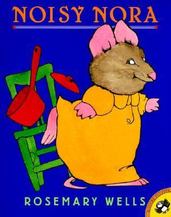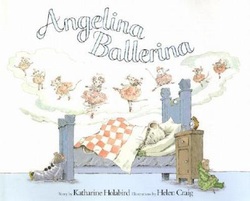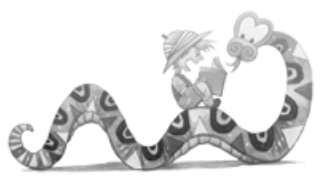Session 1 (6/14/11)
Group Lesson Plan
v Team name: Group 3
v Team members: Cheyenne, Michelle, Lauren, Ricci, Chemiah, Tram.
v Topic to teach: Modes of writing
v Reading: Sibling Relationships and Birth Order by John Santrock.
v General goal(s): Help students to recognize modes of writing and modes of organization.
v Specific objectives (number of objectives is determined by the team):
1. Introduce yourself and the lesson that you are going to teach.
2. Read the picture book.
3. Explain modes of writing and modes of organization.
4. Comprehension check-up.
5. Vocabulary (Index cards).
Materials required: Paper, pencils, name tag, index cards, picture book.
v Introduction: Like a house, writing has structure. Author has to decide modes of writing (general structure) and modes of organization (specific structure) before writing. To improve your reading comprehension and effective reading, I will help you to understand about modes of writing and modes of organization today.
v Specific explanations:
v Team name: Group 3
v Team members: Cheyenne, Michelle, Lauren, Ricci, Chemiah, Tram.
v Topic to teach: Modes of writing
v Reading: Sibling Relationships and Birth Order by John Santrock.
v General goal(s): Help students to recognize modes of writing and modes of organization.
v Specific objectives (number of objectives is determined by the team):
1. Introduce yourself and the lesson that you are going to teach.
2. Read the picture book.
3. Explain modes of writing and modes of organization.
4. Comprehension check-up.
5. Vocabulary (Index cards).
Materials required: Paper, pencils, name tag, index cards, picture book.
v Introduction: Like a house, writing has structure. Author has to decide modes of writing (general structure) and modes of organization (specific structure) before writing. To improve your reading comprehension and effective reading, I will help you to understand about modes of writing and modes of organization today.
v Specific explanations:
Picture book

- Title: Noisy Nora.
- Author: Rosemary Wells.
- Publisher: Puffins Book.
- ISBN: 987-0-14-056728-1.
- Which library do you find the book? Library in CGCC.
Modes of writing:
1. Narrative: tell a story
2. Descriptive: provide details to describe a person, place, experience…..
3. Persuasive: convince someone to change their mind by giving them your opinion with evidence and fact.
4. Expository: explain something with factual and logic.
Modes of organization.
5. Comparison and contrast: similarities and differences between 2 or more objects.
6. Example: provide examples to explain or to support a general statement of the main idea.
7. Classification: divide things into smaller groups
8. Chronological Order (Time order): details are listed in the order in which they occurred.
9. Cause and Effect: Something causes an effect.
10. Listing: Series of details, equal value.
11. Step in a process: something is explained and described in a step- by- step manner.
v Practice examples:
1. Stories, fairy tales…
2. Sam found a pair of pants as purple as a love that would last forever. Then he picked out one as yellow as tomorrow (Sam and the Tigers, Julius Lester pictures by Jerry Pinkney)
3. News paper’s articles
4. Science/ physic books
5. Compare the similarities and differences between orange and apple.
7. Types of music: Jazz, Rock, Pop, Ballad....
8. Divide the students in your class into group depend on their education level
9. History books.
10. What happen if you go to school late?
11. Recipe to make cookies
12. A list of grocery, to do list.
v Quiz examples:
1. How many modes of writing? 4 (narrative, descriptive, persuasive, expository)
2. How many modes of organization? Listing, step in a process, cause and effect, chronological order, example, classification, compare and contrast.
3. What modes of writing if Noisy Nora? Narrative.
4. Why Nora made a lot of noise? Because she was jealous with her siblings, and her parents didn’t notice her.
5. Why she left? Even she tried to make a lot of noise to get her parent attention, no one cared about her so she left.
6. Are there any causes and effects in the story? Yes
7. When did the story start? When did it end? It started in the early when Jack was having his dinner, and it ended when he was sleepy.
8. Is there a chronological order in the book? Yes.
v Team evaluation of learning group:
Modes of writing and modes of organization are new lessons to my partners so I was kind of freak out when I knew that. But the kids were very helpful, they were listening to all of our stories and lessons, and they really tried to absorb all the information that we wanted to give them.
v Team evaluation of their own teaching strategies:
My partner’s book and my lesson are pretty long so we couldn't teach them the entire lesson. Art tried to skip some pages in his book. But he also let the kids read the book with him so that we could get their attention. For myself, instead of teaching the kids all of the materials that I prepared, I tried to help them concentrate on the connection between the book that I read for them and my lesson.
v What comments do you hear from your partner?
They think that the book that I gave them is short and easy for them. They want more challenges.
v Vocabulary:
_Marble: noun, a small ball of colored that children roll along the round in a game.
_Burping: noun, making a baby bring up air from the stomach by patting its back.
_Shrub: noun, a bush or a woody plant smaller than a tree.
_Monumental: adjective, massive or great.
_Sift: verb, to examine something very carefully.
Session 2 (6/16/11)
Group Lesson Plan
v Team name: Group 3.
v Team members: Cheyenne, Michelle, Lauren, Ricci, Chemiah, Tram.
v Topic to teach: Topic, Main Idea, Detail.
v Reading: What Is Intelligence, Anyway? by Isaac Asimov.
v General goal(s): Helping students to identify Topic, Main Idea and Detail.
v Specific objectives (number of objectives is determined by the team):
1. Review lesson from the previous meeting by using index cards.
2. Introduce today lesson.
3. Read picture book.
4. Comprehension check-up.
5. Vocabulary.
6. Closure.
v Materials required: Paper, markers, name tag, index cards, and picture books.
v Introduction: Topic, main ideas and details are elements which create a paragraph, and to become a good reader, you should have an ability to recognize, and distinguish these elements. Today, I’m going to help you to identify these elements through the book named Sam and the Tigers.
v Specific explanations:
v Team name: Group 3.
v Team members: Cheyenne, Michelle, Lauren, Ricci, Chemiah, Tram.
v Topic to teach: Topic, Main Idea, Detail.
v Reading: What Is Intelligence, Anyway? by Isaac Asimov.
v General goal(s): Helping students to identify Topic, Main Idea and Detail.
v Specific objectives (number of objectives is determined by the team):
1. Review lesson from the previous meeting by using index cards.
2. Introduce today lesson.
3. Read picture book.
4. Comprehension check-up.
5. Vocabulary.
6. Closure.
v Materials required: Paper, markers, name tag, index cards, and picture books.
v Introduction: Topic, main ideas and details are elements which create a paragraph, and to become a good reader, you should have an ability to recognize, and distinguish these elements. Today, I’m going to help you to identify these elements through the book named Sam and the Tigers.
v Specific explanations:
Picture book:

Title: Sam and the Tigers
Author : Lester, Julius.
Publisher: Puffin Books.
ISBN: 0140562885
Location: Library at CGCC
Author : Lester, Julius.
Publisher: Puffin Books.
ISBN: 0140562885
Location: Library at CGCC
1. Topic: A word or phrase that is mentioned the most in the paragraph.
What/ who is this about?
2. Main Idea: a core of the paragraph and all sentences support the topic.
What (key point) does the author want me to know about the topic?
3. Detail: Sentences which support the main idea, or provide more information about the main idea. Ex: fact. Examples, statistics, or reasons…..
v Practice examples:
Homework should be reduced for students. Researches show that children spend more time indoor to study than having outdoor activities, which are good for their health. More homework from school also makes students suffer stress. They’re worried about grade or about can’t turn in their homework on time. Therefore, having a reasonable amount of homework will help kids to be mo healthy by giving them more time for physical activities and reducing stress.
· Topic: Homework.
· Main idea: Reducing homework.
· Detail: + Lack of outdoor activities.
+ Suffer stress.
v Quiz examples:
1. What is the story about? Sam and his intelligence.
2. What does Sam do to save his life from the tigers? He gives the tigers his clothes.
3. How can Sam get his clothes back? He gets his clothes back while the tigers are fighting.
4. Which details show you that Sam is smart? He saves his life from the tiger to save his life, and he gets his clothes back while the tigers are fighting.
5. The tigers melt into butter.
v Team evaluation of learning group:
Those kids are pretty good. Some of them remember the material that I teach them last time and pay attention to our lessons.
v Team evaluation of their own teaching strategies:
Last time the kids thought that the book that I gave them was easy so this time I gave them a longer one; therefore, they could know that we really care about their opinions and ideas. We also decorated own lesson plan to get their attention, and asked them to decorate it for us to let them have fun while studying, so I think our teaching strategies is pretty good.
v Vocabulary:
Magnificent: adjective, exceptional beauty.
Habiliment: noun, clothes.
Finery: noun, showy dress or ornaments.
Grin: verb, to smile broadly and show all of your teeth.
Attire: noun, clothes for special occasion.
Feline: adjective, related to cat.
Strut: verb, to walk proudly with your head up.
v Closure:
Each paragraph is a pyramid with topic at the top, main idea in the middle and detail at the bottom. And each part of the pyramid has to support each other to keep the pyramid stays strong through time like.
What/ who is this about?
2. Main Idea: a core of the paragraph and all sentences support the topic.
What (key point) does the author want me to know about the topic?
3. Detail: Sentences which support the main idea, or provide more information about the main idea. Ex: fact. Examples, statistics, or reasons…..
v Practice examples:
Homework should be reduced for students. Researches show that children spend more time indoor to study than having outdoor activities, which are good for their health. More homework from school also makes students suffer stress. They’re worried about grade or about can’t turn in their homework on time. Therefore, having a reasonable amount of homework will help kids to be mo healthy by giving them more time for physical activities and reducing stress.
· Topic: Homework.
· Main idea: Reducing homework.
· Detail: + Lack of outdoor activities.
+ Suffer stress.
v Quiz examples:
1. What is the story about? Sam and his intelligence.
2. What does Sam do to save his life from the tigers? He gives the tigers his clothes.
3. How can Sam get his clothes back? He gets his clothes back while the tigers are fighting.
4. Which details show you that Sam is smart? He saves his life from the tiger to save his life, and he gets his clothes back while the tigers are fighting.
5. The tigers melt into butter.
v Team evaluation of learning group:
Those kids are pretty good. Some of them remember the material that I teach them last time and pay attention to our lessons.
v Team evaluation of their own teaching strategies:
Last time the kids thought that the book that I gave them was easy so this time I gave them a longer one; therefore, they could know that we really care about their opinions and ideas. We also decorated own lesson plan to get their attention, and asked them to decorate it for us to let them have fun while studying, so I think our teaching strategies is pretty good.
v Vocabulary:
Magnificent: adjective, exceptional beauty.
Habiliment: noun, clothes.
Finery: noun, showy dress or ornaments.
Grin: verb, to smile broadly and show all of your teeth.
Attire: noun, clothes for special occasion.
Feline: adjective, related to cat.
Strut: verb, to walk proudly with your head up.
v Closure:
Each paragraph is a pyramid with topic at the top, main idea in the middle and detail at the bottom. And each part of the pyramid has to support each other to keep the pyramid stays strong through time like.
Session 3 (6/21/11)
Group Lesson Plan
v Team name: Group 3
v Team members: Cheyenne, Michelle, Lauren, Ricci, Chemiah, Tram.
v Topic to teach: Figurative Language.
v Reading: The Yellow Ribbon by Pete Hamill.
v General goal(s): Identify the difference between literal and figurative language, between simile, metaphor, and personification.
v Specific objectives (number of objectives is determined by the team):
1. Review.
2. Introduce today lesson.
3. Read book.
4. Comprehension check- up.
5. Vocabulary.
6. Closure.
v Materials required: Paper, markers, name tag, index cards, picture books.
v Introduction: Author use figurative language to make their writing more colorful and interesting. Figurative language are words which are words which are used regardless of their true meaning; therefore, to become a good reader, you need to have an ability to recognize the true meaning of the author.
v Specific explanations:
v Team name: Group 3
v Team members: Cheyenne, Michelle, Lauren, Ricci, Chemiah, Tram.
v Topic to teach: Figurative Language.
v Reading: The Yellow Ribbon by Pete Hamill.
v General goal(s): Identify the difference between literal and figurative language, between simile, metaphor, and personification.
v Specific objectives (number of objectives is determined by the team):
1. Review.
2. Introduce today lesson.
3. Read book.
4. Comprehension check- up.
5. Vocabulary.
6. Closure.
v Materials required: Paper, markers, name tag, index cards, picture books.
v Introduction: Author use figurative language to make their writing more colorful and interesting. Figurative language are words which are words which are used regardless of their true meaning; therefore, to become a good reader, you need to have an ability to recognize the true meaning of the author.
v Specific explanations:
Picture book:

- Title: Angelina ballerina
- Author: Holabird, Katharine.
- Publisher: Pleasant Company Publications,
- ISBN: 1584856556
- Which library do you find the book? Library in CGCC.
- Literal: Compare 2 things from the same category.
2. Figurative: Compare 2 things from different categories.
a) Simile: Compare 2 dissimilar things and use words like, as, or as if to show the comparison.
A is like B
Ex: _My boss roars like a lion at is employees.
_The fog was like a blanket covering the city.
_The runner was fast as a cheetah.
b) Metaphor: Compare 2 unlike things directly without using like, as, or as if.
A is B
Ex: _My boss is a lion, roaring at his employees.
_The fog was a blanket covering the city, so you couldn’t see a thing.
c) Personification: Give human attributes or characteristic to a nonhuman subject.
Ex: _ The car rested in the driveway after a long drive home.
_The tree howled in the wind.
v Quiz examples:
1. What is the story about? Angelina’s love to ballet.
2. Why did Angelina’s mother say her dancing is a nuisance? Because she forgot what she was supposed to do when she was dancing.
3. Who taught ballet to Angelina? Miss Lily.
4. How did Angelina change after her first ballet lesson? She helped her mother, tidied her room, and went to school on time.
5. At the end of the story, did Angelina come true? Yes, she became a famous ballerina.
v Team evaluation of learning group:
They were listening and able to answer my questions. They also followed the advice that I gave them so that they could study more easily. These kids worked hard, and they were very nice.
v Team evaluation of their own teaching strategies:
This time we have a problem to find books which have the same theme with our reading. The exciting part is creating a summary with some cute pictures inside because I want it to look nice and spending time with my kids. I think that we get use to teaching them and preparing lesson plan, and being flexible.
v Vocabulary:
· Curtsy: noun, a formal sign made by a woman in a dance.
· Pansy: noun, a small garden plant with colorful flowers.
· Arabesque: noun, a position in ballet which the dancer balances on one leg with the other leg lifted and stretched out behind parallel to the ground.
· Plies: noun, a position in ballet which the knees are bent while the back is straight.
· Twirl: verb, to spin.
v Closure: For closure, I gave them a chart and then asked them to summarize the lesson that I taught them based on the information on the chart.
Session 4 (6/23/11)
| Session4-group-lesson-plan.doc |



